Pokémon Go Fest Dortmund
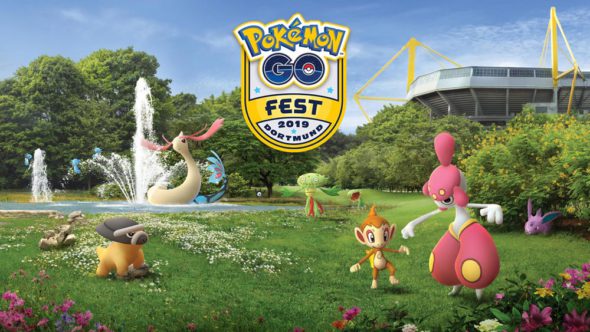
This month marks the third anniversary of Niantic’s smash-hit mobile game, Pokémon Go. Other games have tried to take over the “go out into the real world and collect stuff” genre -we’re looking at you, Jurassic World Alive– but to this day, Pokémon Go still holds the crown. The initial hype may have died down, but the game still has millions of active players worldwide. On the first weekend of July, tens of thousands of them gathered in Germany to enjoy the first European Go Fest, a celebration of everything Pokémon Go. We took the two-and-a-half-hour drive to find out what Go Fest had to offer.
Return to a familiar location
For the first-ever European Go Fest, Niantic partnered with the city of Dortmund. This partnership wasn’t anything new, as Dortmund’s Westfalen Park was host to last year’s smaller-scale Safari Zone event. When we say smaller scale, we don’t mean there were fewer attendants though –while Go Fest hosted an impressive 85,000 visitors spread out over four days, 2018’s Safari zone managed double that amount in just two days. Of course, the Safari Zone was a free event whereas Go Fest required a €25 ticket to attend. The city of Dortmund restricted the number of visitors to 25,000 tickets per day, as the event was limited to the park, whereas the Safari Zone event was all throughout the city as well. While Saturday and Sunday tickets sold out fairly quickly, Thursday and Friday never achieved full attendance. Still, having three to four times fewer visitors on each weekend day meant Go Fest never felt unpleasantly crowded, and a lot more effort was put into providing a variety of entertainment to those attending.
The Wish Pokémon
At 10:00 am sharp, Go Fest started: nearby spawns changed and a ton of event-exclusive Pokéstops popped up. We were greeted in-game by professor Willow. The professor was the catalyst for the Go Fest exclusive storyline and associated special research quest. A variety of Pokémon had gone missing from their usual habitats and it was up to you, the trainer, to collect them and return them to their homes. We were tasked to travel to each of the different zones that were set up in the park and take a snapshot of the missing species in their correct habitat. To complete the storyline meant circling the park at least twice, completing tasks along the way. This was a clever way to spread out attendants, as the area-specific tasks didn’t need to be completed in order and there were various entrances to the park. Completing each step rewarded the player with experience, stardust, rare items or desirable Pokémon, including elusive species like Magnezone and Milotic.
One thing that could have been handled better here was the designation of the habitats: maps were provided by helpful staff in the park, and spawns were a good indicator of where you were, but we couldn’t help but feel the in-game map could’ve used something extra as well. Changing the texture depending on the area you were in, or displaying key locations such as the team lounges could’ve made the area easier to navigate.
- Wake up, Jirachi!
- The special trades at Go Fest had their advantages
- Milotic, a Pokémon that can’t be found in the wild outside of Go Fest
- A trip down Memory Lane
- Carnivine, a Pokémon normally exclusive to the US
- Photobomb surprise
The main prize here was the mythical Wish Pokémon Jirachi who, according to the story, was the cause of the consternation along the other Pokémon: The Pokémon that went missing from their habitat were looking for help to wake up the star-headed monster. Jirachi was made available for the first time at Go Fest Chicago, and Go Fest Dortmund was the first chance European players got to add the critter to their collection. Those unable to attend Go Fest shouldn’t fret: a different Jirachi quest will be made available worldwide later this year.
All in all, if you rushed through the Jirachi quests, they shouldn’t have taken up more than an hour or two, though Niantic kept in mind those that didn’t complete the questline while in Westfalen Park: after Go Fest ended, any uncompleted tasks were changed to objectives that could be completed outside of the event.
So much to do, so much to see
Just like the Pokémon themselves, trainers attending Go Fest came in all shapes and sizes. Although everyone was there for the same game, not everyone focused on the same aspects. Niantic knows this, and they tried to diversify the activities to cater to pretty much every kind of Pokémon Go player with the notable exception to those that enjoy raiding -a boss fight that rewards a chance of catching a rare Pokémon- and conquering gyms, but we’ll get back to that later.
Apart from the aforementioned Jirachi storyline, which was the “main” activity, Go Fest offered a huge variety of rare spawns for those seeking to make a dent in their Pokédex. These monsters included several forms of the elusive Unown, -which are the rarest species of Pokémon outside of events- and Carnivine, a Muppet-like plant creature that normally only spawns in certain parts of the US.
Those looking to collect even more rare specimens gathered at the dedicated trading outpost (though several hopeful trainers carried their “looking for this Pokémon” signs around the park as well). Adding a new species to the Pokédex counts as a special trade, which is normally limited to one per day, but those attending the event could perform up to five of these special trades. The most sought-after Pokémon weren’t the elusive shiny variants, but the regional mons that spawn outside of Europe.
Speaking of shiny Pokémon, Go Fest was the place to be for these ultra-rare variant monsters. For the uninitiated: a shiny Pokémon is an alternate color version of a normal Pokémon. Outside of events, the odds of encountering one of these are roughly 1 in 450. These odds were significantly boosted at Go Fest, and many trainers went home with over a dozen new shinies. Shiny Pokémon were also handled way better at Go Fest than they were at last year’s Safari Zone event: The available monster pool at the Safari Zone was limited to roughly a dozen species, and only about half of those could be shiny. This meant that most players went home with at least one of each of the shiny variants. In contrast, Go Fest had no less than 37 shiny eligible species of monsters, not counting those that hatched from eggs. Given the amount of shiny Pokémon, it meant it was practically impossible to catch every shiny variant at Go Fest, but those dedicated to hunting a specific species had enough time to try and get their desired shiny mon. By providing such a huge variety, Niantic ensured that the trade value of the caught monsters wasn’t diminished as we can’t imagine that even the most avid shiny hunter has every possible shiny variant that was available at Go Fest yet.
Not everyone came to Dortmund just to collect more critters. Ever since Niantic introduced PVP to the game, a competitive scene popped up, and Go Fest took full advantage of this: battle arenas were set up, tournaments organized and trainers pitted their mons against one another in 3-on-3 bouts of frenzied screen tapping. Those lucky enough to come out on top went home with medals.
Outside-of-game activities included raffle games on stages installed at each of the team lounges, meet & greet sessions with Pokémon Go YouTubers (such as MYSTIC7 and Trainer Tips) and of course the attractions that Westfalen Park had on offer themselves. Although the miniature train didn’t make the rounds, the cable car was in operation and proved to be quite popular. Riding this brought back memories of the cable car from Pokémon Ruby, Sapphire, and Emerald, and it provided a bird’s eye view of the activities in the park.
One thing we should also mention is memory lane -a 5km track that circled around the park with event Pokéstops that recalled key moments in PoGo’s history.
The end…. Or was it?
At exactly 18:00 on Sunday, Go Fest came to an end officially. The spawns and temporary Pokéstops vanished but as the crowd started to make its way to the exits of the park, an announcement was made that there was going to be a little extra for those that were patient. Sure enough, after the obligatory crowd photo around 18:30, everyone still present were asked if they wanted to join Niantic in testing what was called a “multi-thousand-person raid”. The crowd was then escorted by security personnel to the Niantic Garden. Sure enough, a few minutes before 19:00, six brand new gyms appeared in the area. These were immediately taken over by trainers from team Mystic and team Valor, with team Instinct failing to claim one of them. At 19:00 sharply, each of these spawned a Meowth raid and everyone was given a free raid pass. The aim here was to see if the servers could handle several thousand people raiding the same gym at the same time, even though the 20-person per raid limit was still in place. While no clear reason was given to the purpose of this test, the most likely explanation was to test whether having gyms and raids at future editions of Go Fest was viable without crashing the system. Nevertheless, those attending these raids went home with an extra souvenir: a Meowth in a raid-exclusive Premium Pokéball. As Meowth hasn’t been available in raids outside of Go Fest, this was a neat little extra to end Go Fest with.
As our group walked back to our car, having achieved a healthy 30000 step count, several of us received a notification from that other Niantic Title; Wizards Unite. As Go Fest ended, a worldwide event was about to start in the Harry Potter game. We shrugged, got in the car and drove back to Belgium.
- The raid test gyms…
- ….and the associated badge!
- The exclusive Premium Ball Meowth is in
2 Comments
Leave a Reply
You must be logged in to post a comment.

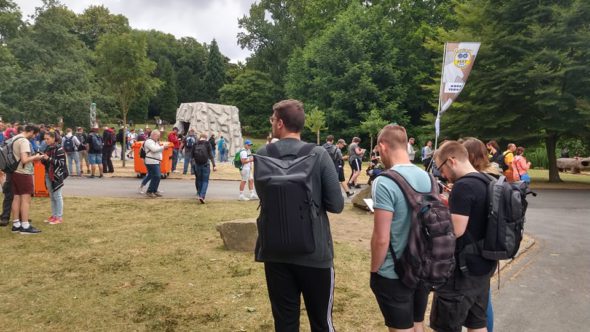

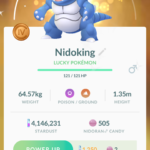
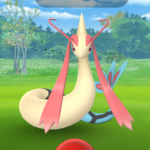

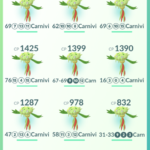

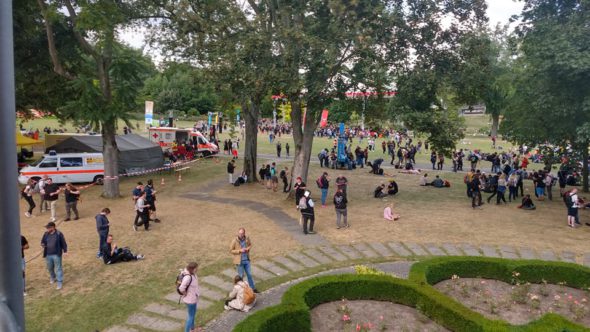
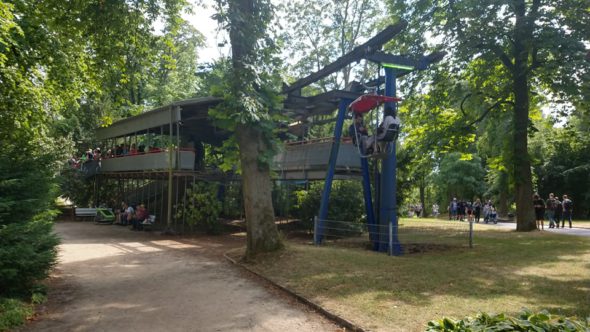
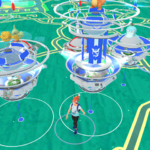
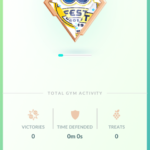
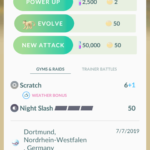




[…] here we are again. We wrote about 2019’s Go Fest event, which took place in Dortmund, and we were eager to return to Germany to see what Niantic had in […]
[…] when Pokémon Sleep was originally announced, many thought it was a joke. The hype surrounding Pokémon Go had died down, and the Sleep announcement seemed like a desperate attention grab, especially since […]